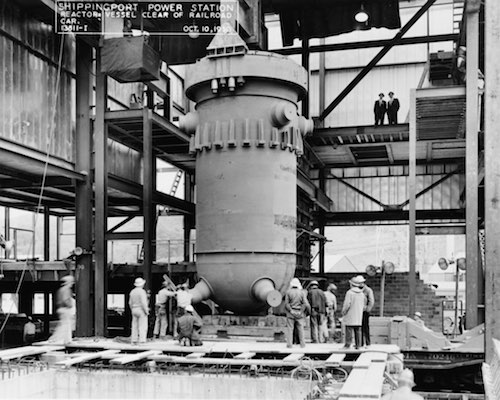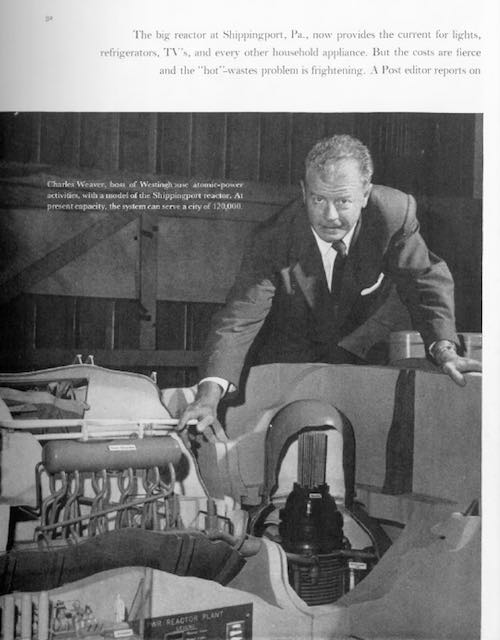Three Mile Island’s Effect on Nuclear Power in the U.S.
Nuclear power remains a tricky subject in the minds of many Americans. While there are environmental benefits to well-managed nuclear power, such as the lack of emissions associated with other forms of energy, many have concerns based on waste containment and storage issues and accidents that have largely occurred outside the United States, like the Chernobyl and Fukushima Daiichi disasters. Today, the U.S. has 60 nuclear power plants with a combined 99 reactors spread across 30 states; those units produce around 19.7% of the country’s electricity and nearly 60% of our emission-free energy. And yet, the progression to more widespread use was almost completely brought to a standstill by one of the most notorious nuclear-related accidents in the world. Though not remotely on the scale of Chernobyl or the Fukushima Daiichi disaster, the Three Mile Island incident 40 years ago this week seriously slowed down the use of nuclear energy in the United States.
The first unit (Unit 1) of the Three Mile Island Nuclear Generating Station went active in 1974. It takes its name from its location, an island three miles down the Susquehanna River from Middletown, Pennsylvania. Unit 2 came online near the end of 1978.
On March 28, 1979, Unit 2 experienced a malfunction in its cooling system. This led to what’s called a “partial meltdown” of the reactor’s core, which is the part of the reactor that holds the nuclear fuel components. Typically, large amounts of heat come from the reactions in the nuclear material; this heat, plus the water that cools it, produces a volume of steam that feeds into a turbine generator to make electricity. In this case, the core became too hot, making one of the elements literally melt; that, in turn, sparked the release of both radioactive krypton-85 gas and iodine-131 into the environment around the station.
On the fortunate side, the quantity of krypton-85 that escaped was much larger than the iodine-131, which can be significantly more dangerous when not properly contained (such as when it’s used in nuclear medicine applications, like thyroid treatments). Nevertheless, more than 2 million people in the area were exposed to a minor amount of radiation as a result of the meltdown. The United States Nuclear Regulatory Commission fact sheet on the accident offers an explanation of what that exposure means. It explains that the people “received an average radiation dose of only about 1 millirem above the usual background dose. To put this into context, exposure from a chest X-ray is about 6 millirem and the area’s natural radioactive background dose is about 100-125 millirem per year for the area.”
The impact on the American people and their view of nuclear energy was swift and immediate. In a massive coincidence, the film The China Syndrome, about a nuclear meltdown, had been released less than two weeks before the event. The movie was a critical and financial success, and the looming specter of what could have happened in real-life combined with the unsettling nature of the film to sharply turn the public’s opinion on nuclear power toward the negative. The subsequent amalgam of scared investors, motivated activists, and nervous politicians led to the cancellation of dozens of possible reactor openings in the wake of Three Mile Island. In fact, no new reactors were added to already-existing U.S. power plants between 1977 and 2013; however, enough new plants were built in other locations between 1979 and 2007, including the 47 reactors that had been approved for construction prior to 1977, to dramatically increase the amount of electricity derived from nuclear power in the States. Tension over nuclear power was reignited in following the tsunami-inflicted meltdown at Japan’s Fukushima Daiichi in 2011. While efforts to build more plants continue, a number of the projects have had to deal with financial issues (some going back to the Great Recession 10 years ago) and various construction delays.
Unit 2 has been closed ever since, with the full clean-up operation not completed until 1993. Fortunately, as reported by the NRC, “comprehensive investigations and assessments by several well respected organizations, such as Columbia University and the University of Pittsburgh, have concluded that in spite of serious damage to the reactor, the actual release had negligible effects on the physical health of individuals or the environment.” Today, Unit 1 of Three Mile Island is still in operation, although it faces closure at the end of this year if financial problems are not resolved.
Featured image: Three Mile Island Nuclear Generating Station in 1979. (U.S. Department of Energy photo; Wikimedia Commons via Public Domain)
The Shaky Promise of the First Atomic Power Plant

Nuclear energy seemed to have a bright future in 1957. In just 12 years, scientists had transformed the reaction that destroyed Hiroshima and Nagasaki into heat and light for in the Pittsburgh area, home to the world’s first full-scale atomic power plant built for civilian purposes.
But in a 1958 Post article about this first nuclear energy plant, there were also reports of misgivings and concerns over this new form of power.
Some were easily disproved, like the complaint that power generated at nuclear plants made electric lights change colors, or that energy travelling through power lines would “atomize” people in their homes.
Other concerns couldn’t be so easily dismissed, particularly the worries about safety and cost. The experience from a handful of nuclear-energy plants was causing “a lot of hard reappraising… and a certain amount of disillusionment,” according to author Steven M. Spencer.
Of the hundreds of companies which had reserved expensive tickets to the bright and promising atomic future, a number have been discouraged by unanticipated technical hurdles and soaring costs — 50 to 100 per cent or more in two years — and have canceled their reservations.
The greatest technical hurdles involved safety: avoiding a meltdown of the reactor core and safely disposing of radioactive materials. Spencer carefully delineates the many safety features of the reactor, including some that today sound alarming: the steel container that houses the reactor is checked for leaks using soap bubbles, as one would for a deflated tire. Despite the many precautions, one engineer observed, “Some fool can and usually does prove that nothing can be made foolproof.”
As the world has confronted nuclear plant disasters from Three Mile Island to Chernobyl to Fukushima, safety remains the biggest hurdle, although no longer the only one. Nuclear power now has to compete with more plentiful sources like natural gas, and increasingly affordable options such as wind and solar.
But until those alternatives grow even less expensive and easier to use, nuclear energy remains too powerful to abandon. Technology is still advancing that make nuclear plants increasingly safe. As an April 2017 Forbes article notes, “next-generation reactors (expected to be deployed between 2020-2030) represent advancements in sustainability, economics, safety, reliability and proliferation resistance.” The world has come a long way in 75 years, when Enrico Fermi constructed the first nuclear reactor.
